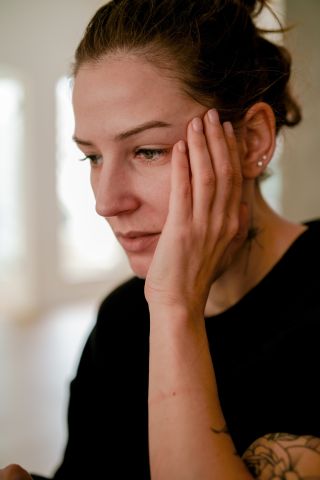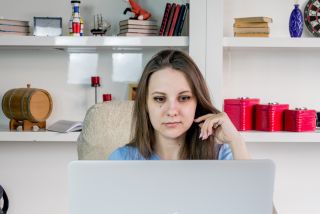
Health anxiety can be crippling
Source: Michael Heise/Unsplash
During the Covid pandemic, many of us became more mindful of health risks than we were previously. But then we adapted and now are going on with our lives pretty much as before. But, for some people, a pre-existing inclination to ruminate about health concerns has intensified, feeding into crippling obsessions over the medical meaning of body sensations and time-consuming attempts to get certainty.
We have all probably had the experience at least once in our lives where we experienced some sensation, perhaps shortness of breath or a racing heart, and found ourselves running scary mental movies about serious illness. Most of us shake those thoughts off as the sensations wane, or after checking in with friends or seeking medical advice.
Cyberchondria: Hours Online on the Worry Path
But for people who suffer from health anxiety, the focus on “what if” becomes a compulsion to worriedly track the suspicious sensations in an effort to predict and understand what is going on. Those what-if movies are often amplified by Dr. Google, where even the most benign sensations can be linked to dire illness. This online health fear cycle has been coined cyberchondria. Hours are spent online pursuing unlikely but devastating possibilities that lure people further down the worry path.
Unfortunately, this rumination jacks up the sympathetic nervous system and produces a whole host of sensations that can validate the original catastrophic hypothesis. It also fuels the fantasy that there is and should be a conclusive answer to why they feel what they feel.
Fixated But Not Feeling
People with health anxiety appear to be very tuned in to their bodies. They can tell you exactly when the tingling gets worse and how the tinnitus shifts in tone and how the lump in the throat makes them feel unable to swallow. They are often very knowledgeable, able to tell you the life cycle of a tick that may possibly have bitten them and that now is certain to cause Lyme disease.

Cyberchondria
Source: Bermix Studio/Unsplash
This fixation on illness and sensations makes health worriers appear to be very aware of the body but, in reality, they are quite detached from their lived experience. They are avoiding the felt sense inside the body, as the sensations shift and ebb and flow. The story about what is going on dominates their thoughts. They touch down into the body for a second to track a sensation and then jump quickly into their heads with a fearful prediction about what that sensation might mean.
From “What If” to “What Is”
The work of resolving health anxiety is the same as the work of addressing all forms of anxiety: We must face vulnerability. We need to release the fixation on “what if?” and turn ourselves toward the painful truth of “what is.”
Vulnerability is a fact, constant and inevitable, like a background hum of life: We have limits to control things. Whether it’s landing that job, having a good night’s sleep, or not catching Covid, the outcome is not entirely up to us. That creates a feeling in our bodies: unrest.
Wired through the same nervous system circuitry as fear, unrest is a growth promoting signal – a physical spike alerting us to the optimal moment to tune inward. If we tune in and soothe the body when unrest stirs, we access adaptive emotions that help us come to terms with the fact that we cannot make the world be as we wish.
Embracing Unrest: Our Path Home
Unrest is our path home, but since it comes through the same pathway as fear, we unconsciously misinterpret unrest as danger. We unwittingly escape the discomfort meant to help us grow by creating suffering as we escape via all sorts of activity and stories. For the health anxious person, frightening narratives about illness are aimed at eliminating the uncertainty that feels intolerable.
But instead of leaving the body we must come home and pay slow, close attention with warm interest and non-judgment until the body recognizes there is no danger. We need to enter into the sensations we have been obsessing about and allow ourselves to simply feel them without a story.

Accepting our limits is key
Source: Naassom Azevedo/Unsplash
We need to be with the uncomfortable sensations as they are. As we slow down we begin to feel them fluctuate – and we realize there is more going on inside than we had really felt before. We come to see that, although what we feel may be uncomfortable, it is not dangerous.
Accepting Our Human Limits
As we stay present with the discomfort of unrest the body is assured and settles. We realize that, although we long for certainty and control, we live in a world that has neither. As we bear the discomfort of unrest we see that, much as we wish we had certainty and control, we can accept our human limits and be open to our fullest lives.
